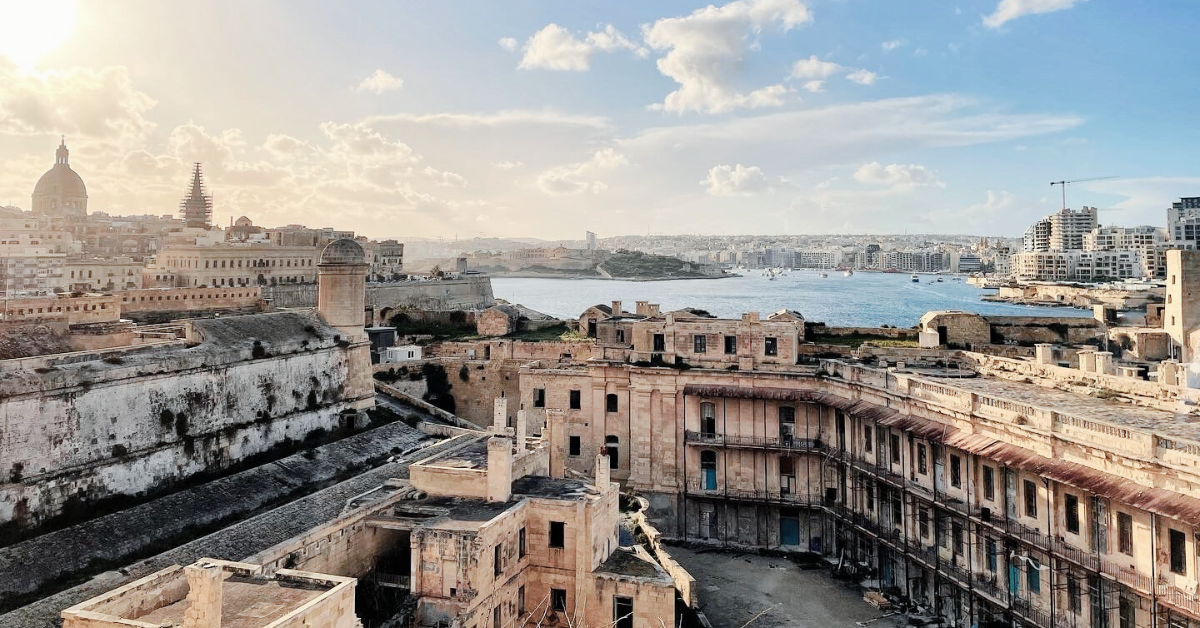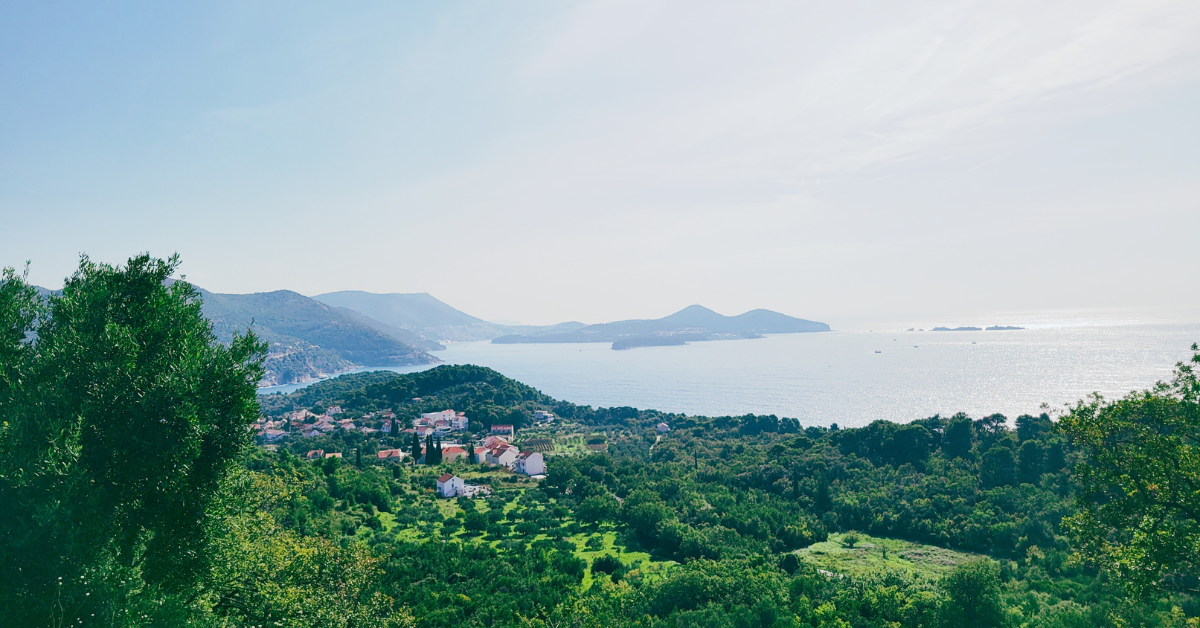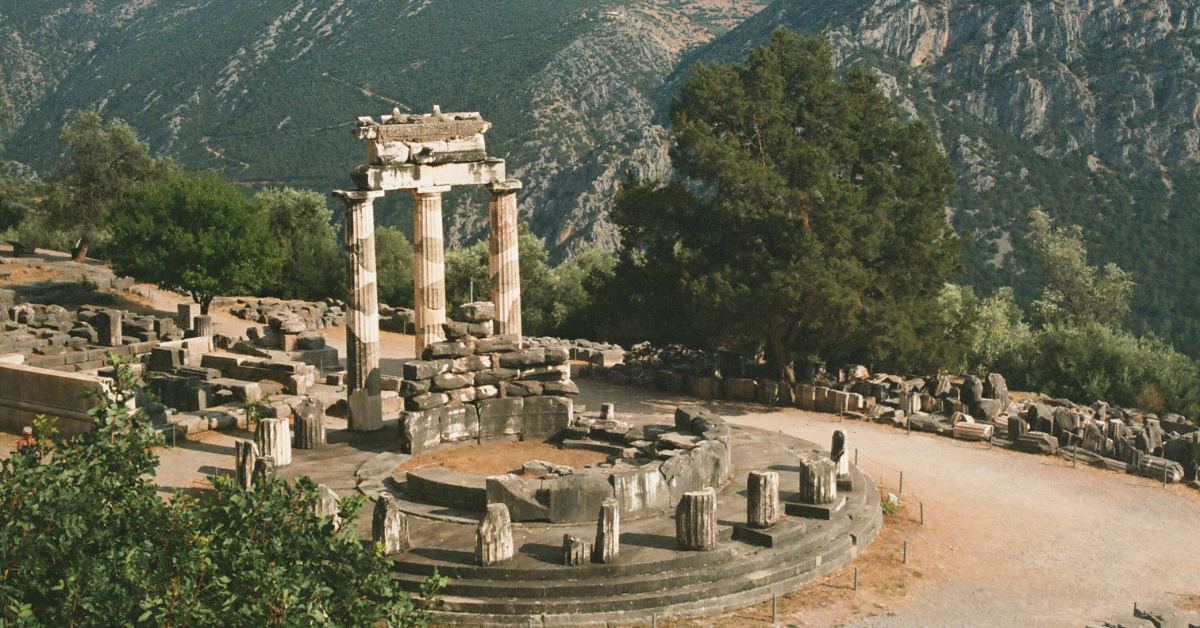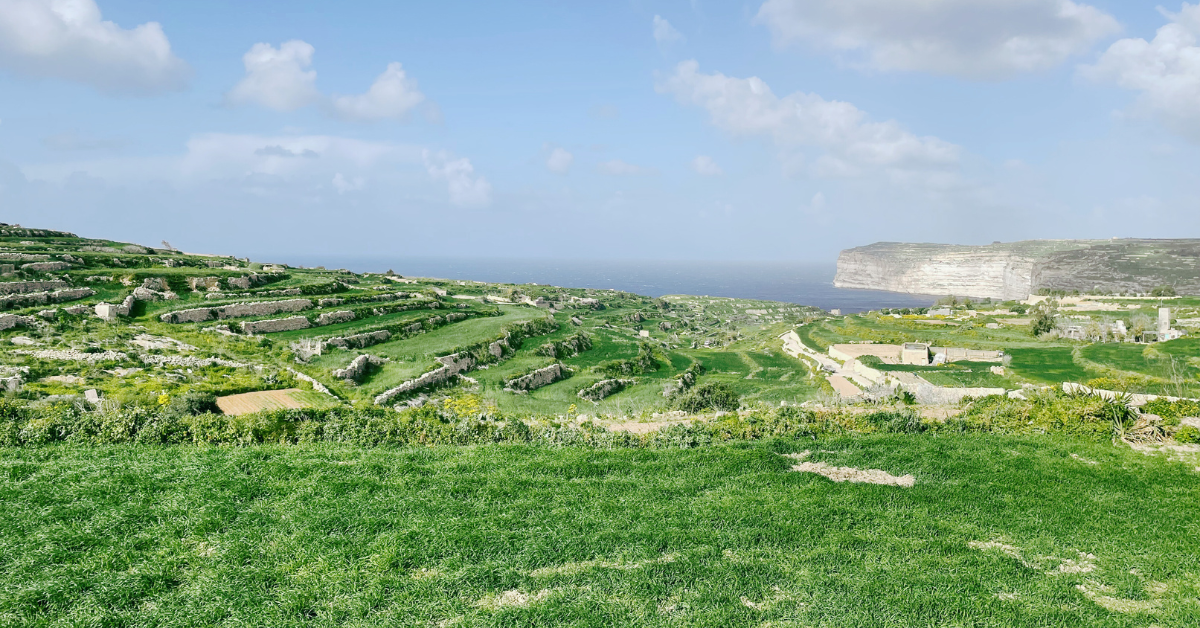Some places feel almost imagined—where nature, history, and faith intersect in such surreal harmony, you have to remind yourself it’s all real. Meteora, in central Greece, is one of those places.
Towering sandstone cliffs rise suddenly from the earth like a stone forest, each crowned with centuries-old monasteries that seem to defy both gravity and logic. The name itself means “suspended in the air”—and when morning mist clings to the valley, it’s easy to see why. This was one of the most awe-inspiring stops on our trip, and a destination that left us feeling deeply grounded and completely transported all at once.
What Is Meteora?
Meteora refers to both the geological formations and the spiritual sanctuaries perched atop them, near the towns of Kalambaka and Kastraki. These massive rock pillars were formed millions of years ago from river and lake sediment, compressed and pushed skyward by tectonic shifts. Local legend tells a different story, though—one where defeated Titans were turned to stone by Zeus himself.
Between the 9th and 15th centuries, Orthodox monks and hermits made their homes in these cliffs, seeking solitude and connection with the divine. Over time, they built monasteries brick by brick, hoisted by ropes and baskets. At their peak, 24 monasteries operated here. Today, six are still active, two of which are nunneries.

How to Get There
The easiest way to reach Meteora is by train from Athens or Thessaloniki. The journey from either city takes about 4 hours, with direct and one-transfer options to Kalambaka. Visit Meteora’s official website has updated info and itinerary ideas, even if you’re not booking a tour.
Visiting the Active Monasteries
Each monastery has unique architecture, sacred relics, and panoramic views, but all require modest dress: shoulders and knees should be covered (they often provide wrap skirts at the entrances). Entry is just a few euros and helps preserve the sites.
- Great Meteoron – Oldest and largest, with excellent museums
- Varlaam – Second largest, beautiful frescoes
- Rousanou (St. Barbara) – Nunnery, very photogenic
- St. Nicholas Anapausas – Compact with vibrant interior art
- St. Stephen – Nunnery and easiest to access
- Holy Trinity – Remote and dramatic; used in For Your Eyes Only



Our Meteora Experience
We booked a 4-day package through Visit Meteora, which included travel, accommodation, and two guided experiences: a sunset tour and a hiking tour. It was the perfect balance of history, adventure, and quiet wonder.
Sunset Tour
This isn’t just a sunset stop—it’s a journey through Meteora’s history. We drove past jagged cliffs and valleys, stopping for photos and insights from our local guide. We visited one monastery and a Byzantine church before ascending to the final viewpoint: a cliff ledge where you can watch golden light spill over the monoliths.
Our sunset came with a dramatic twist—a thunderstorm rolled in just as we reached the top. But we’d already soaked in the magic during golden hour, and it somehow added to the atmosphere.



Hiking Tour
After an overnight rain, the world felt fresh. We hiked through shaded trails with birdsong and soft morning light all around. Along the way, we stumbled on Ypapanti Monastery, built into the side of a cliff—still one of my favourite discoveries. It’s part of Great Meteoron but tucked away like a secret hermitage.
Eventually, the trail led us up to the impressive Great Meteoron Monastery, where we explored museums and icons, then descended via one of the original footpaths used by monks centuries ago. It was peaceful, informative, and physically refreshing.




Other Things to Do in Meteora
Meteora isn’t only about monasteries. For a well-rounded experience, consider these activities:
- Rock climbing
- Truffle hunting & cooking classes
- Mountain biking
- Cave exploration
- Wine & gastronomy tours
- River rafting
- Museums and cafes in Kalambaka or Kastraki
Meteora is more than just a photo op—though yes, your camera will be working overtime. It’s a place of serenity, mystery, and deep spiritual energy, even if you’re not religious. Whether you’re hiking to a cave monastery or watching the sun melt behind the stone giants, this is a place that stays with you.
Pin Me For Later:






















Leave a Reply